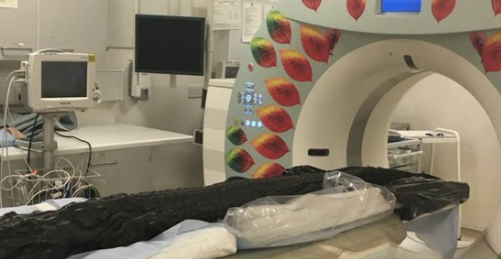When we think of ancient Egyptian mummies, human mummies often come to mind, perhaps recalling school trips to museums or Hollywood depictions. However, the Egyptians also preserved millions of animals, revealing fascinating details about their religious and cultural practices.
A recent study on a mummified crocodile has provided extraordinary insights into its final moments and the methods used by ancient embalmers. Using a CT scanner, researchers were able to determine how the crocodile died and how its body was treated post-mortem. This particular crocodile mummy, housed at Birmingham Museum and Art Gallery in the UK, measures 2.23 meters in length.
Next to the Pyramids, the Sphinx and mummies, one of the most intriguing discoveries from ancient Egyptian civilization is a form of writing that appears like stylized pictures of people, animals and objects. Hieroglyphic writing, whose name comes from Hieroglyphikos, the Greek… pic.twitter.com/yIgFPwP59u
— Archaeo – Histories (@archeohistories) August 2, 2024
To the ancient Egyptians, animals held significant religious importance, believed to traverse between earthly and divine realms. For instance, hawks were associated with the sun god Horus, and cats were linked to the goddess Bastet. Most animal mummies were created as votive offerings or gifts, providing a snapshot of the natural world between approximately 750BC and AD250. Some mummified species, like the sacred ibis, are no longer found in Egypt due to climate change and desertification.
Crocodiles, once common in the Nile, were associated with Sobek, the god linked to the Nile’s annual floods. They were mummified in large numbers as offerings and used as talismans to ward off evil. The completion of the Aswan Dam in 1970 prevented crocodiles from moving northwards, reducing their presence in lower Egypt.
The study revealed that most crocodile mummies were small, suggesting the Egyptians could hatch and keep young crocodiles until needed. Larger crocodiles, posing greater risks to keepers, were likely captured in the wild and quickly mummified. Research on mummified remains of larger animals showed evidence of skull trauma inflicted by humans, probably to immobilize and kill the animals.
The CT scans of the crocodile mummy showed its digestive tract filled with small stones called gastroliths, used by crocodiles to aid digestion and regulate buoyancy. The presence of a metal fish hook and a fish among the stones suggests that large crocodiles were caught in the wild using baited hooks. This finding aligns with the account of Greek historian Herodotus, who described how Egyptians used baited hooks to catch crocodiles.
How the last meal of a 3,000-year-old Egyptian crocodile was brought back to life using modern science: https://t.co/q6KhDKX9Mu
— Ken Gusler (@kgusler) August 3, 2024
Unlike many aspects of ancient Egyptian life, little information was recorded about animal worship and mummification. Classical writers who traveled to Egypt remain some of the best sources of information. The study’s findings were supplemented by colleagues from the Birmingham School of Jewelry, who replicated the hook in bronze for display alongside the crocodile mummy.
Modern technology is continuously enhancing our understanding of the ancient past. Medical imaging techniques, like X-rays and CT scans, enable researchers to study artifacts without causing damage, unveiling secrets that traditional methods could not. As technology advances, we can expect to uncover even more about the fascinating world of ancient Egypt and its practices.
Key Points:
i. Animal Mummification Practices: Ancient Egyptians mummified millions of animals, including crocodiles, as part of their religious practices.
ii. Religious Significance: Animals like hawks, cats, sacred ibises, and crocodiles were associated with various gods and were mummified as votive offerings or talismans.
iii. Case Study of a Crocodile Mummy: A recent study using CT scans revealed that a 2.23-meter-long crocodile mummy contained gastroliths, a fish hook, and a fish, suggesting it was caught using baited hooks.
iv. Impact of Modern Technology: Techniques like X-rays and CT scans allow researchers to study ancient artifacts non-destructively, uncovering new details about ancient practices.
v. Continued Discoveries: Modern technology continues to provide insights into the lives and practices of ancient Egyptians, with potential for future revelations.
Al Santana – Reprinted with permission of Whatfinger News

